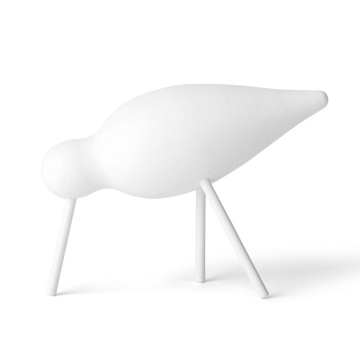Yakitori Bliss: Indulging in Japan’s Smoky Delights
The History and Origins of Yakitori
Yakitori, a term that translates to "grilled bird," has deep roots in Japanese culinary tradition, tracing its history back to the Edo period (1603-1868). Initially, this dish comprised small pieces of chicken lightly seasoned and grilled over charcoal, serving as a convenient option for street food vendors who catered to the busy urban populace of Edo, now Tokyo. The relatively simple preparation process and use of affordable cuts made it accessible and popular among the working class, marking the beginnings of yakitori's status as a beloved Japanese delicacy.
As time progressed, yakitori evolved beyond mere street fare. In the post-Edo period, the dish began to appear in izakayas—Japanese pubs that offered an informal dining experience. These establishments would experiment with different seasoning methods and cooking techniques, which contributed to the growth of yakitori's popularity. Dish variations came into existence, not only featuring various cuts of chicken but also incorporating different types of meats, vegetables, and even seafood, showcasing local ingredients for diverse flavors. This evolution underlined yakitori's adaptability, allowing it to thrive in varied regional culinary contexts.
Throughout the decades, yakitori has become synonymous with relaxed dining experiences. It remains a significant focal point at gatherings, festivals, and special occasions, capturing the essence of Japanese hospitality. As global interest in Japanese cuisine continues to grow, yakitori has made its way into international culinary scenes, appealing to a wide range of palates while retaining its cultural core. Therefore, exploring the history of yakitori provides insight into not only a dish beloved by many but also an integral component of Japan's rich food heritage that reflects regional diversity and culinary evolution.
Understanding the Different Types of Yakitori
Yakitori, a delightful culinary staple of Japanese cuisine, encompasses a variety of skewered and grilled items, primarily focusing on different cuts of chicken. Each cut brings its unique flavor and texture, contributing to the overall experience of this dish. The most common chicken cuts used in yakitori include momo, which refers to the juicy and tender thigh meat, and negima, composed of chicken pieces interspersed with green onion. Another notable cut is sunagimo, which consists of chicken gizzards, offering a firmer texture and rich taste. These cuts are skilfully seasoned and grilled, showcasing the versatility of chicken in yakitori preparations.
While chicken is the primary focus, yakitori can also feature other types of proteins. Pork, beef, and even seafood are used in various recipes, allowing diners to experience a diverse range of flavors. Moreover, yakitori often incorporates vegetables such as bell peppers, mushrooms, and asparagus, which are grilled alongside the meats, enhancing the dish's overall appeal and nutritional balance.
Central to the authentic taste of yakitori is the grilling technique, notably the use of binchotan charcoal. This traditional Japanese charcoal, made from ubame oak, is prized for its ability to produce a steady heat and impart a subtle smoky flavor. The choice of grilling method significantly influences the final taste and texture of the skewers. Additionally, the application of tare sauce— a rich blend of soy sauce, sake, mirin, and sugar—further elevates the dish's profile. Applied during grilling or served as a dip, tare enhances the savory notes of the meats and vegetables, making each bite a gratifying experience. Understanding these aspects not only enriches a beginner's journey into yakitori but also enhances the knowledge of seasoned enthusiasts, promoting further exploration within this beloved Japanese cuisine.
The Art of Grilling Yakitori: Techniques and Tips
Grilling yakitori, a popular Japanese dish of skewered and grilled chicken, involves a meticulous process that elevates its flavor profile. Mastering the art of grilling yakitori requires understanding various techniques that focus on preparation, seasoning, and cooking methods. One critical aspect is the skewering process. Selecting the right skewer, typically made from bamboo, is essential as it should be adequately soaked in water beforehand to prevent burning. Positioning the chicken pieces evenly apart on the skewer ensures even cooking, and varying cuts of chicken can add textural diversity to the dish.
Seasoning plays a pivotal role in developing the distinct smoky flavors associated with yakitori. Traditional preparation often involves marinating the chicken in a tare sauce—a combination of soy sauce, mirin, and sake—to impart depth and sweetness. Alternatively, salt is a classic seasoning that enhances the natural flavor of the chicken. The choice between tare and salt can significantly affect the overall taste, allowing for personal preference and creativity.
Cooking yakitori requires the right technique and equipment. A traditional way is using binchotan charcoal, known for producing high heat and an earthy flavor. Properly managing the temperature is crucial; skewers should be placed at various distances from the heat source, allowing for ideal cooking conditions. Regularly basting the skewers with tare during grilling not only adds flavor but also contributes to the dish's characteristic glaze.
To elevate the yakitori culinary experience further, pairing it with beverages such as sake or beer can enhance the flavors. Sake, with its rich umami notes, complements the smokiness of the grilled chicken, while a cold, crisp beer can balance the flavors with its refreshing qualities. Exploring these pairings can lead to a deeper appreciation for the culinary art of yakitori, making both cooking and dining an engaging experience.
Best Yakitori Restaurants to Visit in Japan
Japan, renowned for its culinary culture, offers an array of exceptional yakitori restaurants that cater to both locals and tourists seeking authentic dining culinary experiences. Below, a selection of some of the best establishments across the country is presented, each famous for its contribution to the beloved dish.
One must-visit spot is Birdland in Tokyo. Located in the prestigious Ginza district, Birdland is known for its exquisite selection of chicken skewers. The restaurant specializes in using free-range chickens, ensuring fresh and flavorful offerings. Diners can indulge in a variety of yakitori cuts, from tender thigh to flavorful liver, complemented by specialty dipping sauces that highlight the ingredients' quality.
Moving to Osaka, Yakitori Kushi-Tei stands out for its cozy atmosphere and expertly grilled skewers. This establishment takes pride in its unique cooking technique, utilizing a mix of hardwood and charcoal to achieve a distinct smoky flavor. Popular dishes include the grilled chicken heart and seasonal vegetables, providing a hearty gastronomic experience that endears many patrons.
In the ancient city of Kyoto, Torikizoku offers a more casual yet equally satisfying yakitori culinary experience. Known for its affordable pricing and extensive menu, Torikizoku serves up everything from classic chicken skewers to creative fusion variants. The lively ambiance and quality of food make it a favorite spot among students and tourists alike, ensuring an enjoyable dining outing.
Finally, in Fukuoka, Kushikatsu Tanaka showcases regional specialties paired with a diverse drink menu, perfect for those looking to enjoy yakitori in a vibrant setting. Their famous chicken wings and home-made tare sauce have garnered rave reviews, making it a must-visit location for anyone exploring the local food scene.
Embarking on a culinary journey through these yakitori restaurants in Japan offers food enthusiasts the chance to experience the remarkable flavors and intricate grilling techniques that define this beloved dish. Each restaurant's unique offerings promise to create lasting memories for diners eager to explore Japan’s yakitori culture.





